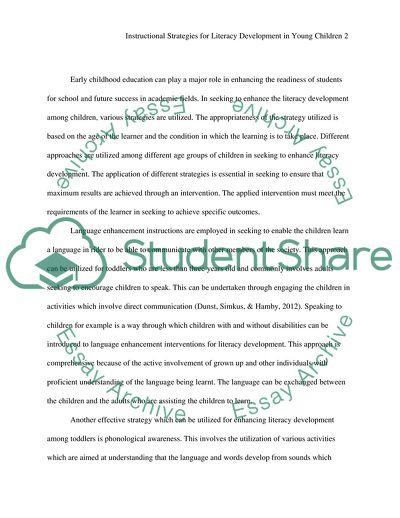Cite this document
(Instructional Strategies for Literacy Development in Young Children Essay Example | Topics and Well Written Essays - 1250 words, n.d.)
Instructional Strategies for Literacy Development in Young Children Essay Example | Topics and Well Written Essays - 1250 words. https://studentshare.org/education/1840867-literacy-essay
Instructional Strategies for Literacy Development in Young Children Essay Example | Topics and Well Written Essays - 1250 words. https://studentshare.org/education/1840867-literacy-essay
(Instructional Strategies for Literacy Development in Young Children Essay Example | Topics and Well Written Essays - 1250 Words)
Instructional Strategies for Literacy Development in Young Children Essay Example | Topics and Well Written Essays - 1250 Words. https://studentshare.org/education/1840867-literacy-essay.
Instructional Strategies for Literacy Development in Young Children Essay Example | Topics and Well Written Essays - 1250 Words. https://studentshare.org/education/1840867-literacy-essay.
“Instructional Strategies for Literacy Development in Young Children Essay Example | Topics and Well Written Essays - 1250 Words”. https://studentshare.org/education/1840867-literacy-essay.


